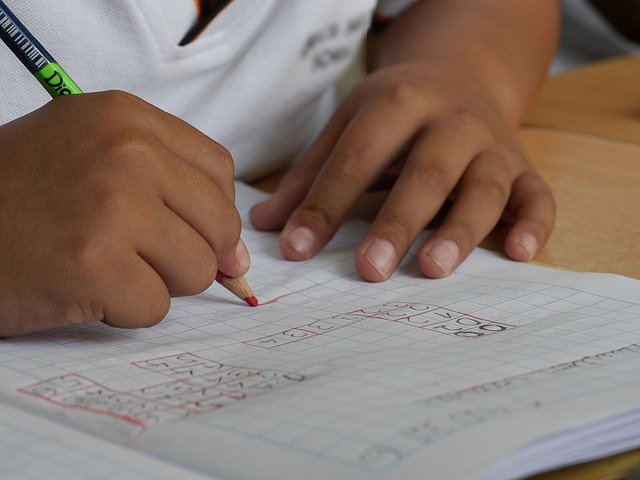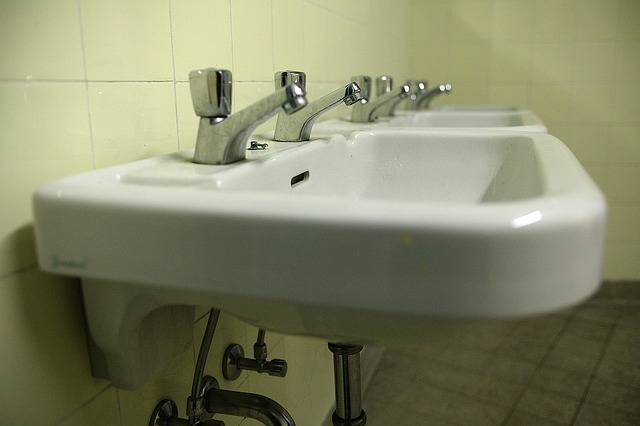No Budget For Adequate Indoor Air Quality Precautions in Schools
When schools re-open fully in September, only very basic indoor air quality precautions will be taken due to tight budget constraints, according to BESA. This is...
Read Full Article
With schools now closed until at least 8 March, what safety measures must schools take to support their reopening?
Schools in England will now be closed to all but children of key workers and those deemed vulnerable until at least 8 March 2021, according to Boris Johnson. He has today announced that a final decision on return dates would depend on the progress of the vaccine targets and that schools will have a fortnight’s notice.
Johnson also told the House of Commons that students returning to school would be the "first sign of normality".
Prior to the latest national lockdown, educational facilities were operating under government guidance for schools, including safe working and protective measures.
Let’s examine some of the main facilities considerations for operating a school under a pandemic:
One area that has gathered pace as we learn more about the nature of COVID-19, is the importance of adequate ventilation.
Ventilation measures are considered the most vital engineering mechanisms in infection control within buildings. Research from both REHA and CIBSE shows that adequate ventilation and effective air distribution can minimise the risk of cross-infection from 1.5 metres onward.
Concerns regarding the indoor air quality in schools was raised in a webinar hosted by the Building Engineering Services Association (BESA), where many professionals raised fears over the possibility of COVID-19 spreading around poorly ventilated classrooms.
BESA noted that The Department for Education’s guidance on schools reopening is updated weekly and gives detailed direction on handwashing, social distancing, the direction of desks, but has only one short paragraph on ventilation.
This simply advises schools to keep systems running as normal and switch any mechanical ventilation from recirculation to full fresh air “if possible”. Alternatively, they should simply open all windows.
Guest presenter Garry Ratcliffe, CEO of Kent-based Galaxy Trust, a federation of three primary schools, said that at least a quarter of the windows in one of the three schools he manages could not be opened and one approach to improving ventilation in classrooms has involved propping open fire doors.
“Opening windows might be OK for September, but not in November,” he told the BESA webinar. “Also, how do we measure air quality? If there is a problem with the lighting or the heating, we notice, but there is nothing prompting me to put anything into my budget to address air quality even if we know it is bad. We don’t even monitor it.
“I am also 99 per cent certain that the direction of airflows will not have occurred to any of my teachers when they were re-arranging their classrooms to cope with the new restrictions.”
Ratcliffe also explained that the total annual budget for capital expenditure at one of his schools with more than 700 pupils was just £10,000. Also, the cost of extra measures to handle the COVID-19 crisis across his trust was £140,000 of which just £40,000 can be reclaimed from the government.
Public Health England has advised people to close toilet lids when flushing to reduce the spread of the virus, but Mr Ratcliffe said that none of the toilets in his schools actually had lids.
Other washroom considerations provided by the government are “different groups being allocated their own toilet blocks” however this is not a concrete requirement.

Picture: a photograph of a washroom sink
A central part of any building being open to the public during the pandemic is, of course, assessing risk.
Schools have remained open to some pupils since 23 March 2020, welcoming more pupils back from 1 June 2020. Schools should therefore have already assessed the risks and implemented proportionate control measures to limit the transmission of coronavirus (COVID-19) for a limited number of pupils.
It is a legal requirement that schools should have revisited and updated their risk assessments (building on the learning to date and the practices they have already developed) before the autumn term began.
The idea of bubbles in schools is to minimise the risk of infection by minimising contact and mixing and to allow easier identification of contacts. For this to work, groups need to be as consistent and as small as possible.
Public service union UNISON has expressed concerned that DfE advice for September states that bubbles can potentially be as large as entire year groups and that staff can move between classes and year groups.
UNISON’s advice is that employers should instead seek to maintain smaller groups – preferably no larger than a normal class in primary and KS3 and half a year group in KS4.
In addition, they also recommend that schools should look to do all they can to keep staff within one bubble and minimise staff movement between bubbles.
But does restricting children to bubbles have the desired effect?
Paul Farmer, Headteacher at Great Baddow High School, Chelmsford, said that by using small bubbles, there was minimal disruption when one of their pupils tested positive for COVID-19:
“With advice from the Health Protection Team and guided by the academy’s risk assessment plan, we were able to look at a range of factors, such as the lessons the pupil had been in and their travel arrangements, to identify pupils who had potentially been in contact with them. This meant that only twenty pupils needed to self-isolate, not the entire bubble.”
However, despite smaller bubbles being much more effective than year-wide ones, schools will continue to face challenges with making small bubbles work within the space and staff members available.
According to the World Health Organisation (WHO), there were few outbreaks reported in schools since early 2020. In most infections or COVID-19 cases reported in children, the infection was acquired at home.
In school outbreaks, it was more likely that the virus was introduced by adult staff rather than amongst pupils. Children experience this disease in a much milder way than adults, and children and adolescents represent about eight per cent of reported cases (and 29 per cent of the global population).
WHO is also careful to emphasise the negative impact of school closures and long-terms absences on children:
“Closures disrupt school-based services such as immunization, school meals, mental health and psychosocial support, and can cause anxiety due to loss of peer interaction and disrupted routines. Being out of school increases the risk of teenage pregnancy, sexual exploitation, child marriage, violence and other threats.
“Harms are greater for children of migrants, refugees, minorities; children living with disabilities; and children in institutions or in countries affected by conflict.”
It was reported in August 2020 that more than 1.5 billion students were affected by school closures worldwide.
Picture: a photograph of a child working on some paper
Article written by Ella Tansley | Published 27 January 2021
When schools re-open fully in September, only very basic indoor air quality precautions will be taken due to tight budget constraints, according to BESA. This is...
Read Full ArticleA solution to remove COVID-19 from the air using UV sanitisers will soon be used in hospitals, after a team led by engineers from the Institution of Mechanical Engineers...
Read Full ArticleDuring the pandemic, COVID has raised the profile of the quality of the air we breathe in our buildings – how do we maintain this priority throughout the winter...
Read Full ArticleA report commissioned by the government’s chief scientific adviser Sir Patrick Vallance has highlighted the crucial role played by building ventilation in...
Read Full ArticleWith businesses already putting plans in place to get people back into the office, ensuring good hygiene practices is paramount in preventing any spread of coronavirus in...
Read Full ArticleBureau Veritas is stressing the need to carry out indoor air quality surveys, swab-sampling programs and quantification of fresh air assessments, to ensure premises...
Read Full ArticleAs the UK tries to look beyond its latest lockdown, air quality treatments are promising to banish coronavirus concerns for good. Steve Skerrett addresses the issue of...
Read Full ArticleA British firm has developed a new system designed to help buildings with air management systems make their air supply secure against airborne pathogens. As COVID-19...
Read Full ArticleThe work of building services specialists is increasingly being measured in terms of human health, according to a range of experts speaking at last week’s BESA...
Read Full ArticleDr Andrew Kemp has told a national newspaper that it’s not yet been proven that alcohol-based hand sanitiser could kill the virus that causes COVID-19 on...
Read Full Article